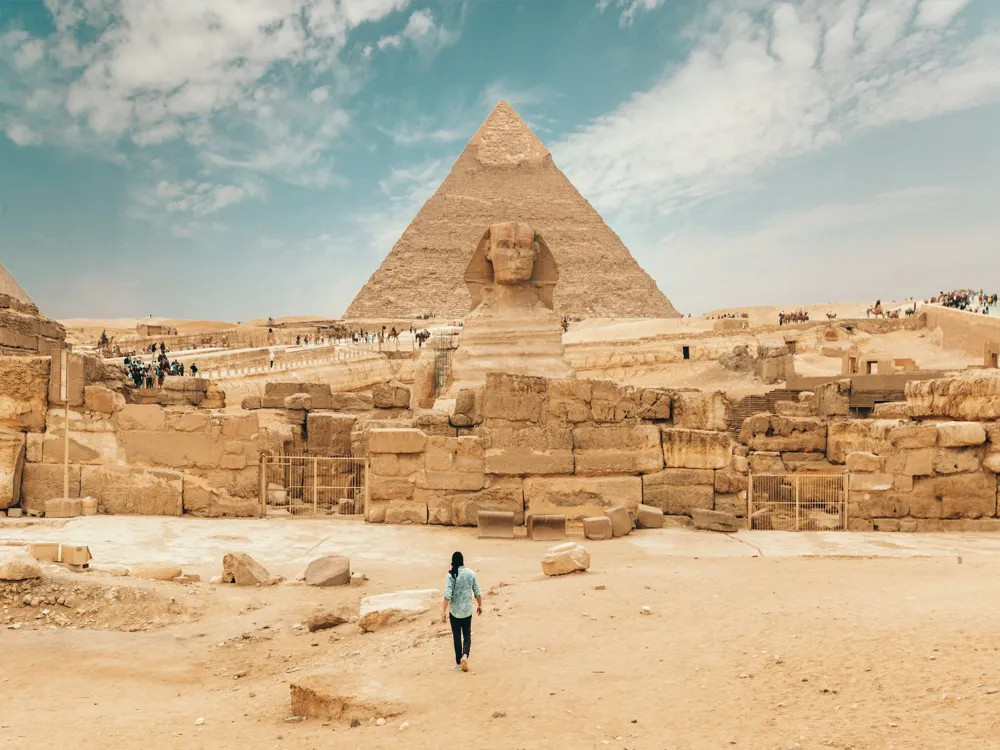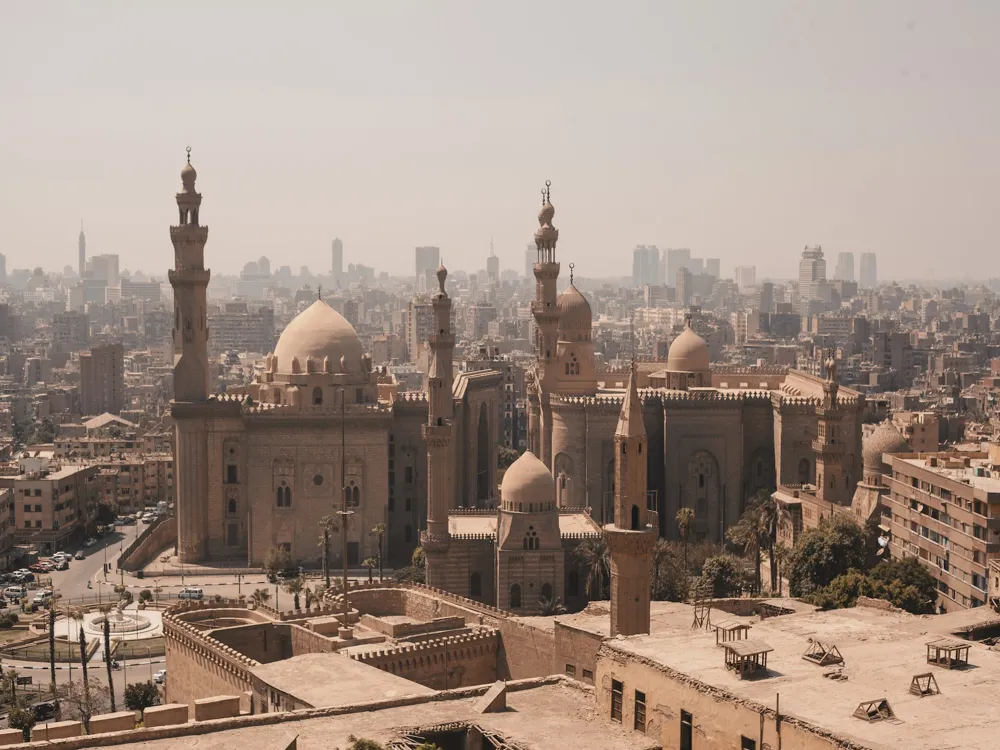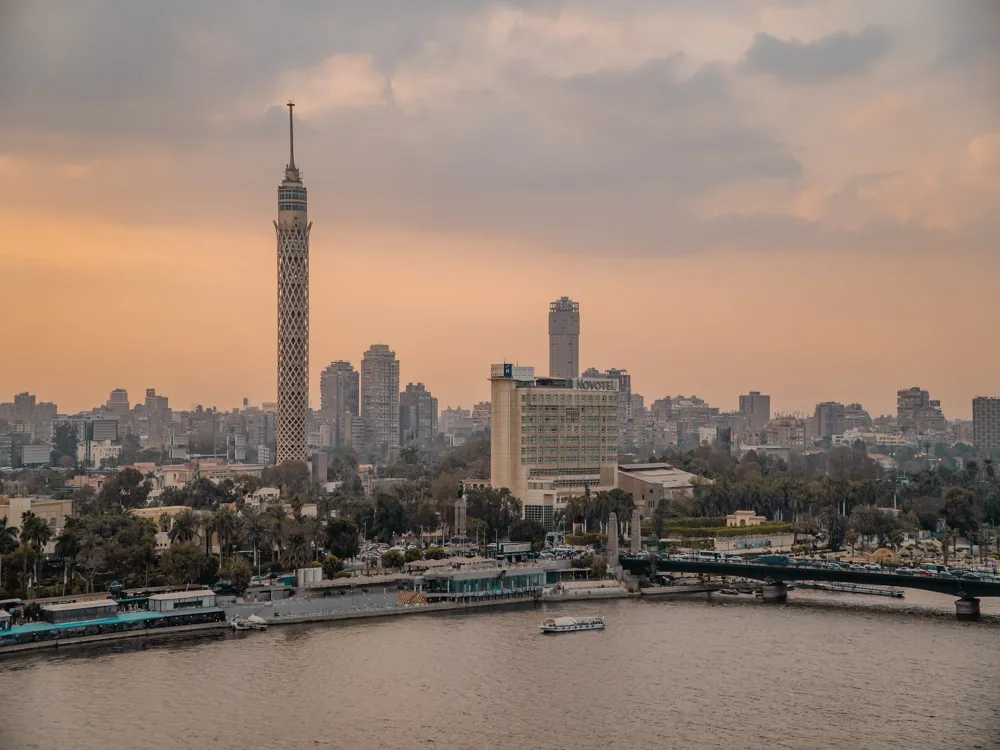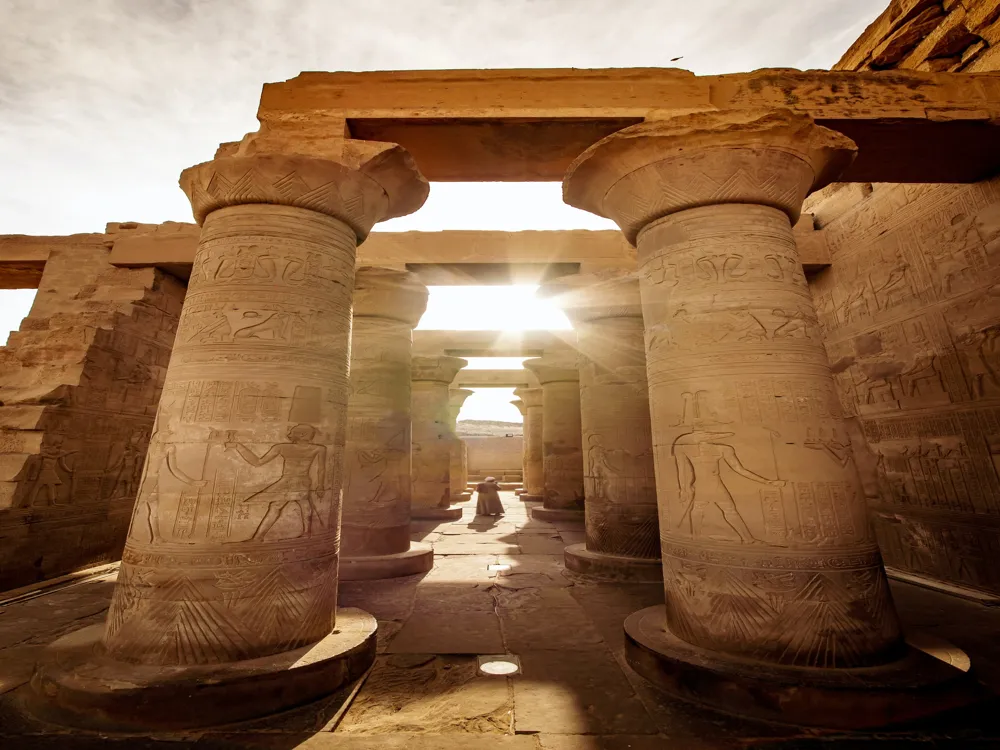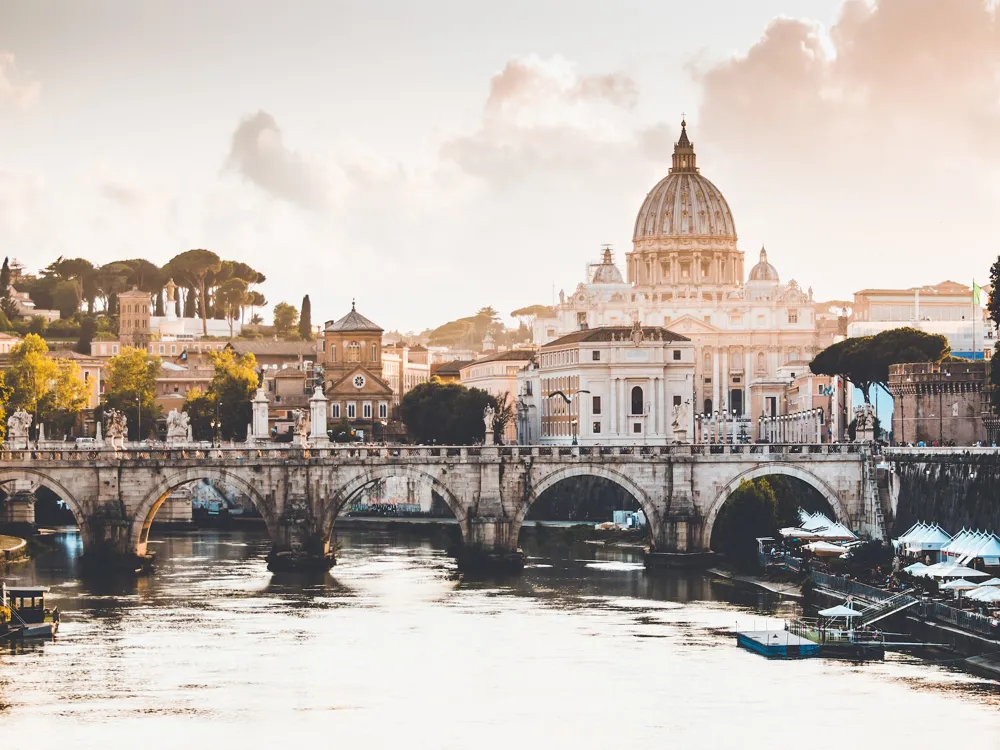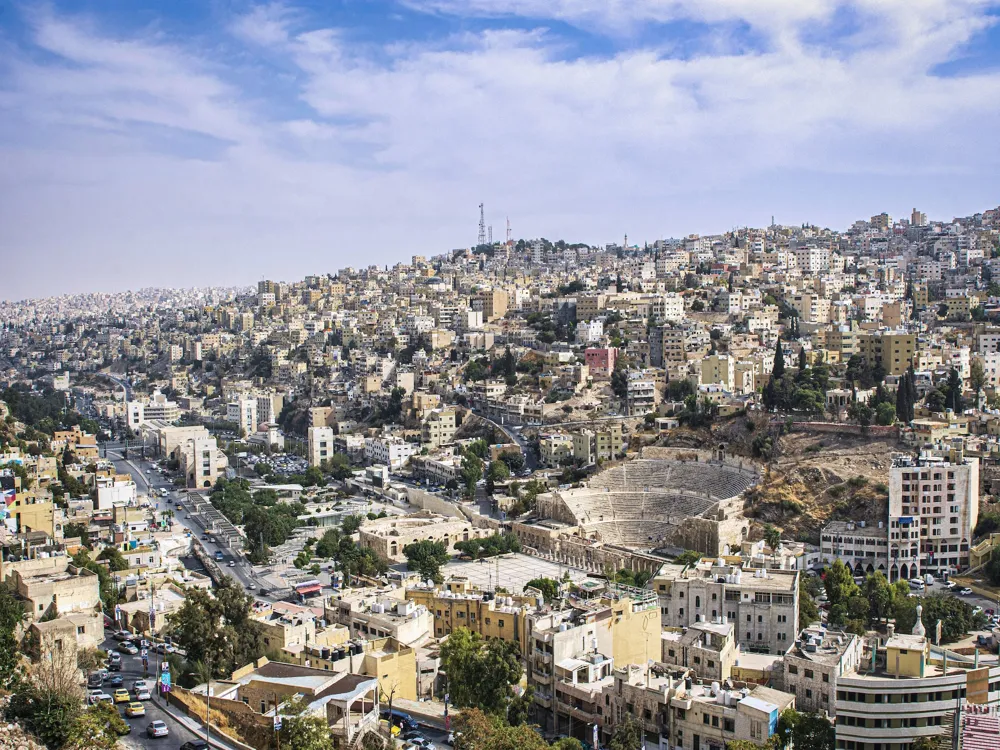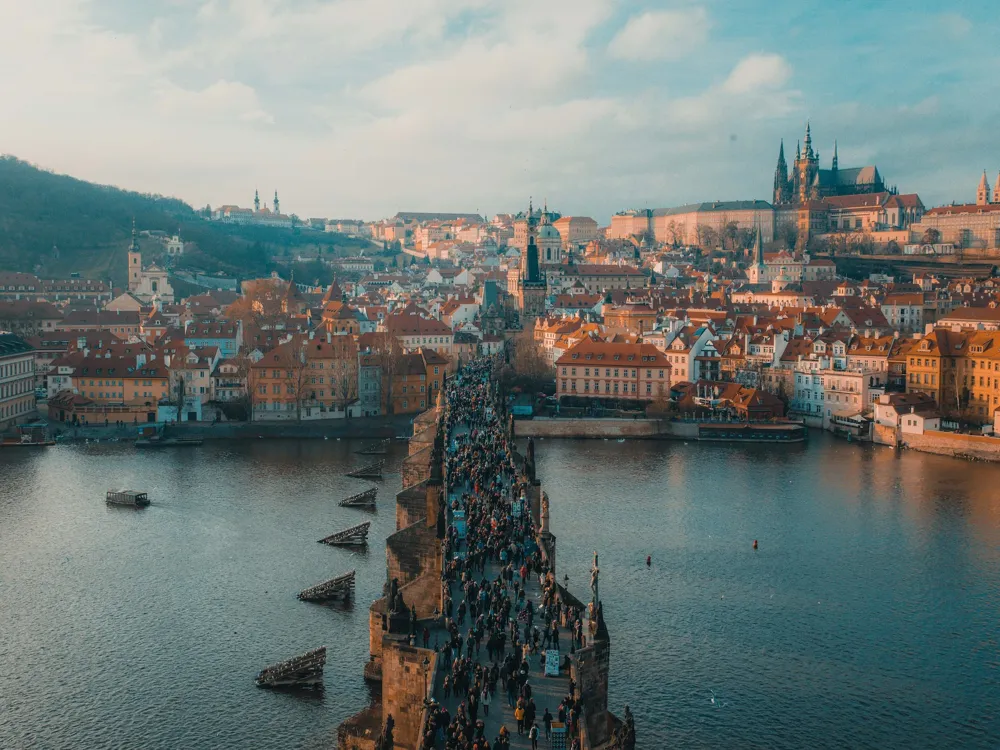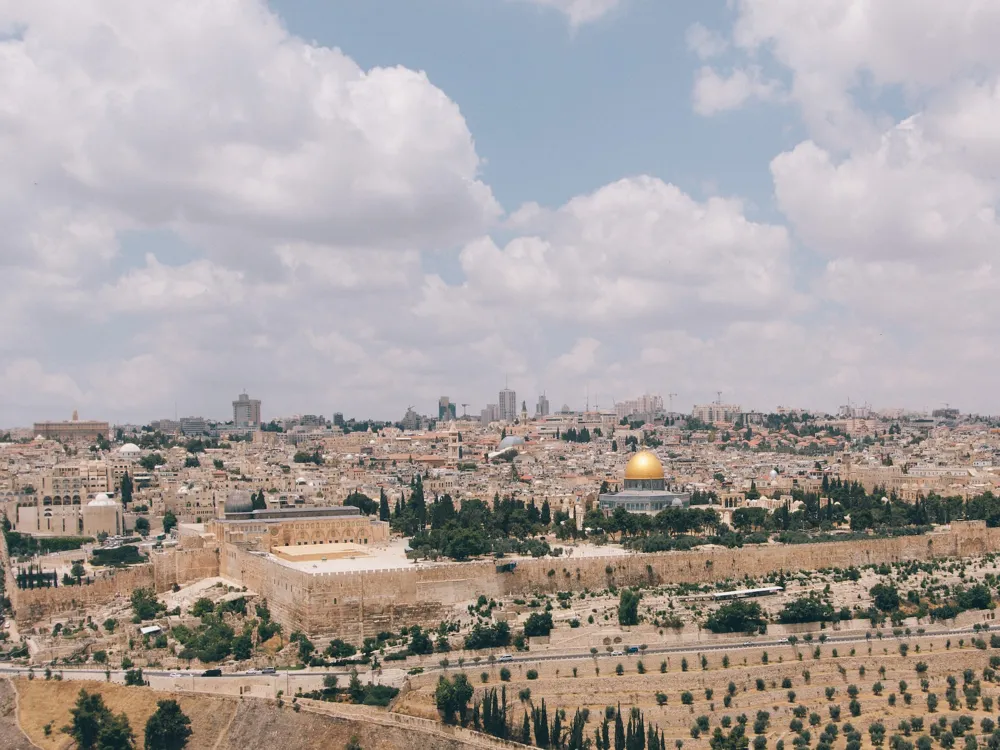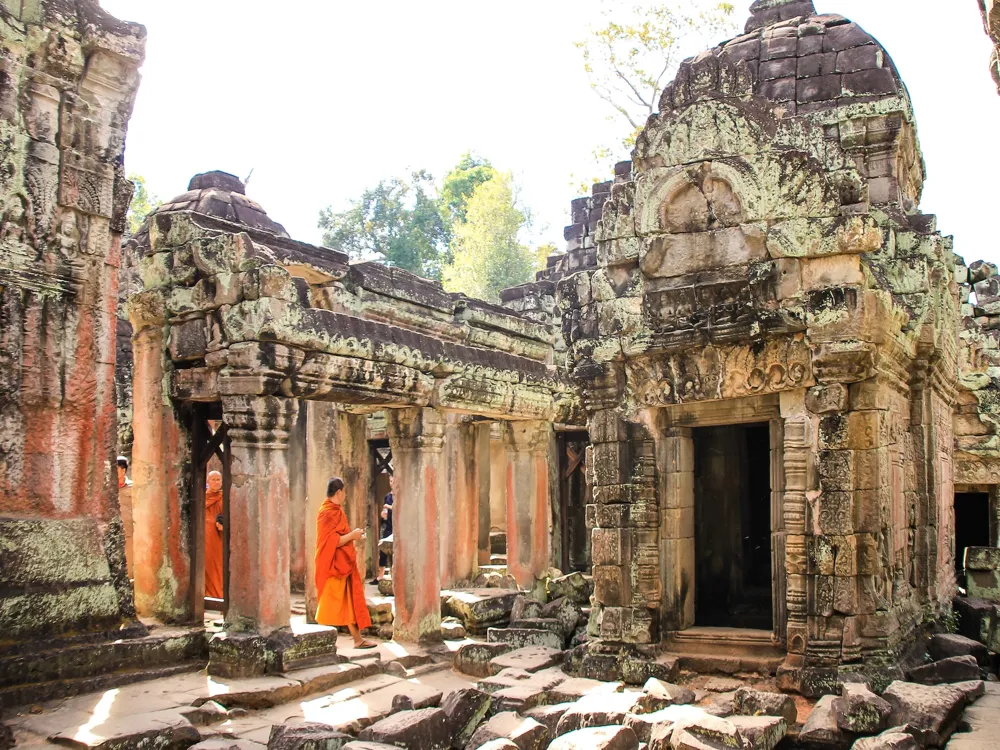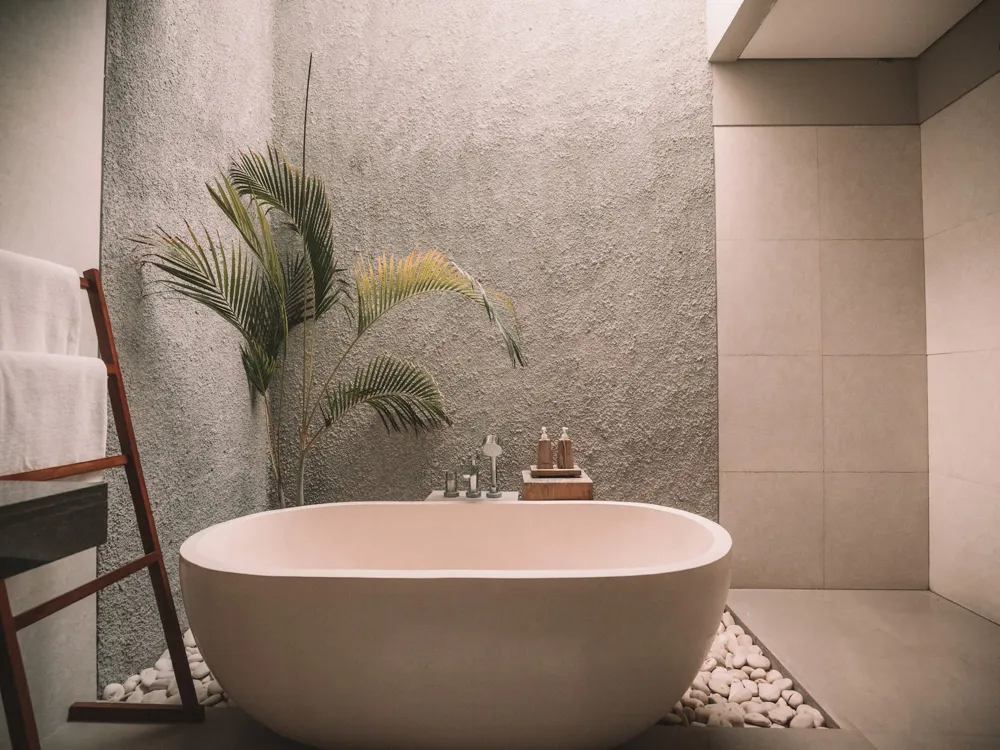Plan Your Travel To Cairo
Places To Visit In Cairo
Pyramid of Menkaure
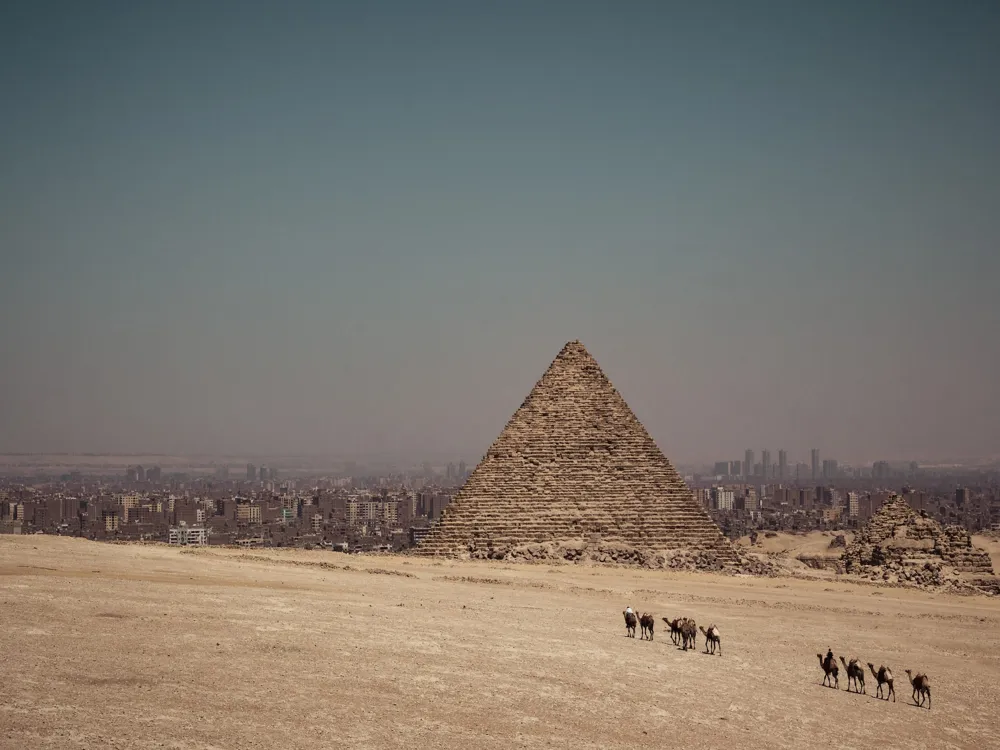
Built by Pharaoh Menkaure, the Pyramid of Menkaure is more popular as the third pyramid of Giza. The Pyramid of Menkaure is also the smallest of all the three Pyramids of Giza and stands at a height of only 61 meters. When you visit the Pyramid of Menkaure, you can clearly observe the architectural beauty of the Pyramid, and the torments it underwent from rulers belonging to the ancient world, who attempted to demolish this magnificent marvel of the world.
Since the origin of Egyptian civilization, Egyptians have continued to fascinate us with their intellectual levels and the ability to develop bizarre monuments, buildings and tombs. One of such bizarre structure is the Pyramid of Menkaure. Together with its Satellite pyramids, the Pyramid of Menkaure can surely be observed as a combination of Science, Architecture, Egyptian culture and mythology. Further, to make your visit to the Pyramid of Menkaure remind you of fun and adventure as well, you may find many locals willing to serve you paid activities such as Camel rides, Horse rides etc. across the three Pyramids of Giza with the Sphinx photo-bombing your snaps!
History of Pyramid of MenkaureDuring your visit to the Pyramid of Menkaure, you will observe that the Pyramid including its Satellite Pyramids is incomplete. The reason behind this is that the Pharaoh died while the Pyramids were under construction. By roaming a bit around, you may come across the Mortuary temple and the Valley temple of Menkaure, which are a must-visit place during your visit to the Pyramids of Giza.Source: https://en.wikipedia.org/wiki/File:Cairo,_Gizeh,_Pyramid_of_Menkaure,_Egypt,_Oct_2005.jpgUnlike the rest two pyramids, the Pyramid of Menkaure has a unique architecture, which makes it famous across the globe in the present world. During your visit to the Pyramid of Menkaure, you will get to visit what is called the upper antechamber. In 1837 A.D., Richard Vyse was the first person to enter the Pyramid structure, only to discover the coffin of Menkaure and a sarcophagus of a woman, most probably his Queen. Some bones were also discovered inside them, carbon dating of which reveals that the bones are 2,000 years old. The coffin lid can be found today at the British Museum, while the sarcophagus is presently resting at the bottom of the Mediterranean.In addition to this, Saladin’s son, al-Malek al-Aziz ben Yusuf tried to demolish the three pyramids of Giza in the late 12th Century A.D. Beginning first with the Pyramid of Menkaure, al-Malek was only able to get a few stones removed in around eight months from the northern face of the pyramid. He also had to make efforts to break the stones into smaller pieces, so that he could transport them easily to the foot of the escarpment.Source: https://en.wikipedia.org/wiki/File:Giza_Plateau_-_Pyramid_of_Menkaure.JPGDue to the problems encountered in demolishing the Pyramid of Menkaure, al-Malek had to drop this idea. But his intentions left a big vertical gap in the northern wall of the Pyramid, which can be easily observed even today. Since then, the Pyramid of Menkaure has stood to draw the attention of people from all over the world towards the life of Pharaoh Menkaure.Architecture of the Third Pyramid of GizaOriginally standing at a height of 65.5 meters, the height of the Pyramid of Menkaure has reduced to 61 meters over thousands of years. Being the smallest of all pyramids of Giza necropolis, the Pyramid of Menkaure has an angle of inclination of 51020’25”. Unlike the other two pyramids, which are purely made of limestone from the outside, the Pyramid of Menkaure has the first sixteen courses made up of red granite, while the upper portion of the exterior is made up of Tura limestone.Source: https://en.wikipedia.org/wiki/File:Menkaure%27s_pyramid,_unfinished_stones.jpgClose to the Pyramid of Menkaure lies its satellite pyramids. Out of these, the third pyramid, which is also the largest one, is partially made up of granite and limestone. While it’s the only satellite pyramid which got completed, the other two pyramids couldn’t be completed. The reason behind this was the death of Pharaoh Menkaure, who died when only the cores of the two satellite pyramids were built. Further, as a result of the death of Menkaure, the granite slabs placed on the exterior surface of the main pyramid were left incomplete.The Mortuary temple of Menkaure is made of different types of materials. While the foundation and inner core are made of limestone, the floor is made of granite. Further, the foundations of the Valley temple of Menkaure were also made up of stone. But during your visit to the temples, you may observe that the temples have been finished with crude bricks. The diversity in materials used for the construction of the main pyramid, the satellite pyramids and the temples preserved for years is what gives uniqueness to the Pyramid of Menkaure.Sightseeing at Pyramid of MenkaurePeople paying a visit to the Pyramid of Menkaure may also spare time and visit the other two Pyramids of Giza, namely the Great Pyramid of Khufu and the Pyramid of Khafre.Activities at Pyramid of MenkaureOne may book themselves a camel ride across the premises of the three Pyramids of Giza. The camel ride is bound to take you back in ancient times, and allow you to observe the beauty of Pyramids of Giza from a different perspective.If you feel uncomfortable riding the ship of the desert, you may hop on to one of the horses and take a stroll across the Pyramids.Shopping near the Pyramid of MenkaurePeople visiting the Pyramid of Menkaure can buy different types of souvenirs from the local vendors present outside the Pyramids.How to Reach the Pyramid of MenkaureThe only way to reach the Pyramid of Menkaure is via road transportation. Since the Pyramids are situated on the outskirts of Giza city, it is advised to reach there either through the personal vehicle or through a taxi/ cab.Tips to RememberCarry plenty of water due to high temperatures during daytime;Wear Sports Shoes;Wear light and comfortable clothing;In case you are a Student, carry your Student ID to avail discount on Entrance Fee.Interesting FactThe limestone blocks in the Mortuary temple of Menkaure weigh as much as 220 tons!
Read More
Pyramids of Giza
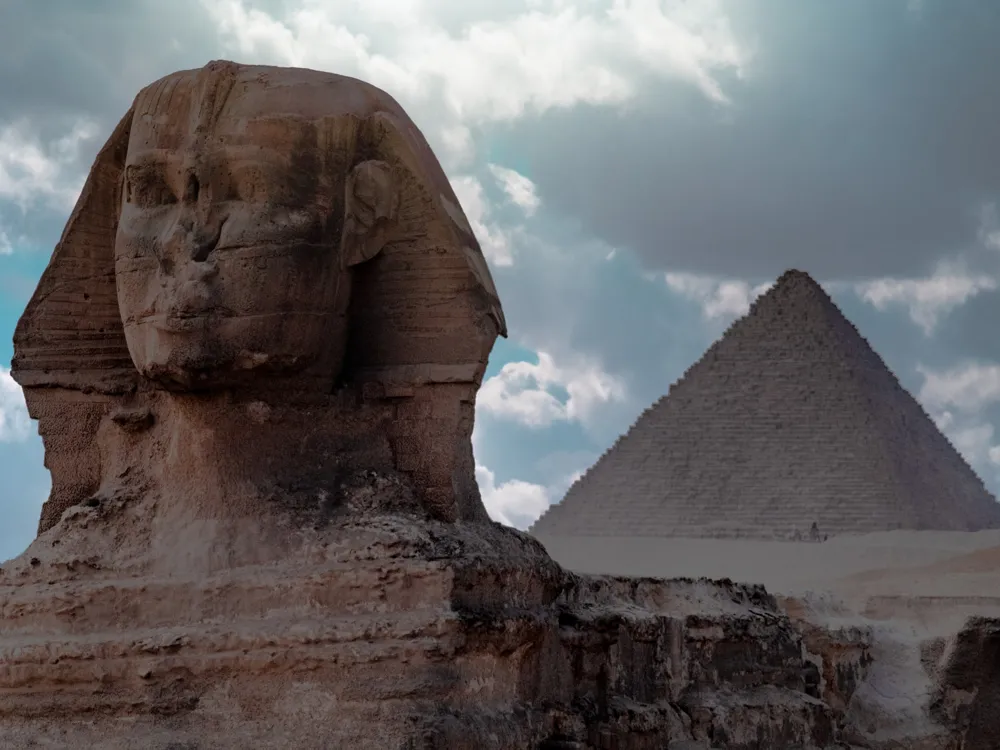
Fantastically attractive, the pyramids of Giza is the tomb of Pharaoh Khufu and the largest Egyptian pyramid. It is also the oldest of the Seven Wonders of the Ancient World. These fourth dynasty funerary pyramids are located on the city's edge and have always been one of the best highlights of Cairo.
The heat and the dust appear to be trivial to explorers when they experience the superb Pyramid of Cheops, the biggest pyramid in the Giza collection. Otherwise called the Great Pyramid or the Pyramid of Khufu, it has a plain wonderful tomb chamber with a sarcophagus. The intriguing slender sections inside the Pyramids take you into the Solar Boat gallery showing fabulous sun-controlled barques revealed in the area that has been carefully re-established to its unique excellence. Towards the south, you would discover the Pyramid of Chephren, normally called the Pyramid of Khefre, which is an enormous passage. Guarding these funeral home sanctuaries is the baffling Sphinx, which is line-bodied and faced like a pharaoh and presumably the most praised landmark in Cairo. This fascination is an antiquated world's prominent milestone.
Read More
Rhoda Island

Situated along the amazing Nile in Central Cairo, Rhoda Island is a great mix of Al-Manyal museums and green gardens. Rhoda Island is one of the most ancient landmarks in the whole of Egypt and is a lucrative spot for tourists from over the world.
The flawless Island of Rhoda is located towards the south of gezira. An abode to Monastili Palace, which is a huge landmark attraction for every visitor, describes the magnificent Egyptian architecture. With a fascinating history, this island is bound to woo travellers whenever they are in the city of Cairo.
Read More
Sphinx
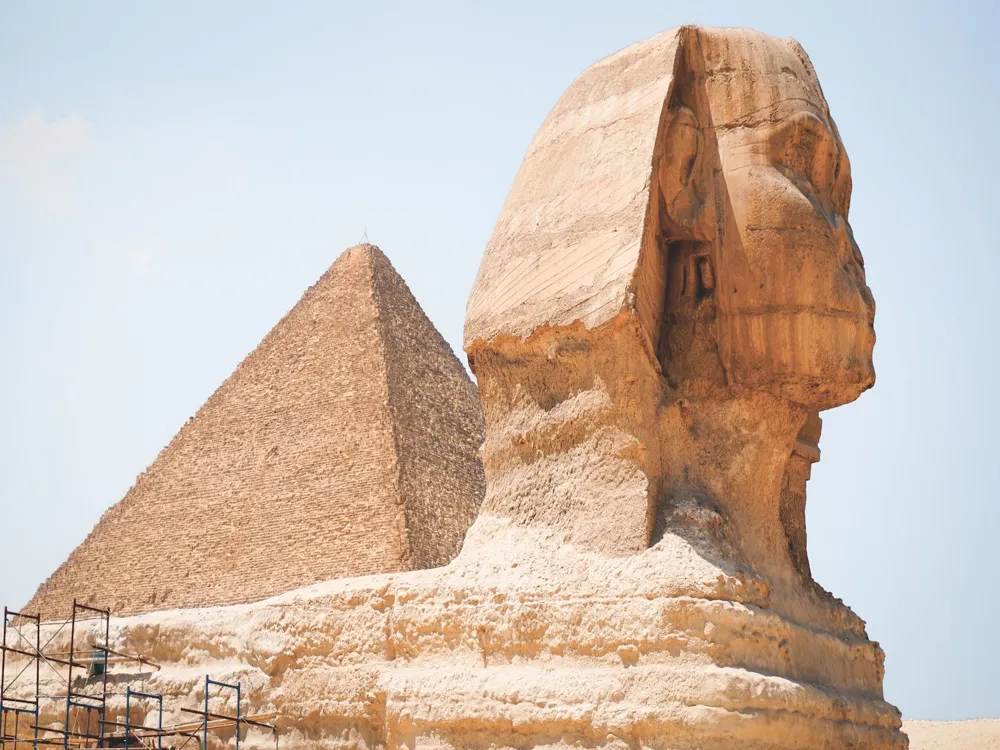
With the body of a lion and the face of a human, the Sphinx of Giza plateau stands at a height of around 20 meters on the west bank of river Nile. The Sphinx has been recognized as a mythical creature in Greek mythology as well, where the Sphinx was a merciless killer who set riddles and killed anyone who was not able to answer them.
Cut out from its limestone bedrock, the Sphinx is also recognized as the oldest known monumental sculpture in Egypt. It is the same bedrock which served as the quarry for the Pyramids of Giza. On your visit to the Sphinx, one may observe that the nummulitic limestone of the region comprises different layers offering different levels of resistance to erosion. Historians credit this characteristic of the limestone for the uneven degradation of the structure over time.
It is quite fascinating to witness the manner in which the Sphinx has been carved out of the bedrock, especially when there was no such technology present to do so. With the Pyramids of Giza in the background, your visit to the Sphinx is going to get you some of the most memorable pictures of your trip to Cairo. And who would not want the sunset of Sahara to peek into the pictures!
History of the Sphinx of GizaDue to the varying degradation of the limestone out of which the Sphinx has been carved out, archaeologists have not been able to identify the actual time period in which the Sphinx was constructed. Further, there was a time when the Giza necropolis got abandoned by humans. As a result of this, the Sphinx got buried in sand up to its shoulders until 1400 B.C., when Thutmose IV began the first ever excavation of the Sphinx.Source: https://en.wikipedia.org/wiki/File:Great_Sphinx_of_Giza_May_2015.JPGThutmose IV, with the team he had, was able to dig out the front paws of the Sphinx. To mark his efforts, and to dedicate his act of excavation to the Egyptian Sun God Ra, Thutmose IV erected a granite slab known as the Dream Stele between the paws of the Sphinx. Another round of excavation was performed by Ramesses II The Great.But it was not until 1817 A.D. when the proper archaeological digging of the Sphinx was performed to unleash the body parts of the monument from within the sands of Sahara. The entire structure of the Sphinx was excavated in between 1925 – 1936 A.D. under the supervision of Émile Baraize.Source: https://en.wikipedia.org/wiki/File:Sphinx_partially_excavated2.jpgTill date, no records have been found which mentions the role of the Sphinx in ancient Egyptian civilization. Historians have not been able to find the name by which the Egyptians referred to the monumental structure. Due to the similarities of a mythical creature from Greek mythology, the name Sphinx has been assigned to the Egyptian monument as well. The role of the Sphinx for the Egyptians has also been compared with that of Khafre’s reign by many historians, and hence, it is believed that this iconic figure represents Khafre’s own personality features.Upon complete digging of the monument, several repairs to the structure were made by the Egyptian government. Some people credit the broken nose of the Sphinx to Napoleon Bonaparte’s soldiers since there are marks of rods being hammered around the area of the nose. Further, the beard of the structure had also fallen down due to erosion, which was later gathered by British adventurists and taken to the British Museum.Present day, the Sphinx undergoes multiple restorations each year. The major reason behind this is the rise in the water level of the Nile, which is giving rise to internal cracks in the Sphinx. As a result, the Sphinx is kept closed for the public visit during the restoration sessions. So before planning your trip to Cairo, it is advised that you keep a check on whether the restorations are being performed or not.Architecture of the Sphinx of GizaPossessing a distinct figure of a lion’s body and a human head, the Sphinx of Giza stands guarding the three Pyramids of Giza at a height of 20 meters on the soil of Sahara. Many people relate the construction of Sphinx was done by Khafre, but till date, no such evident proof has been discovered which justifies this statement.However, due to the Dream Stele, a granite slab erected at the foot of the Sphinx having hieroglyphs mentioning about Khafra, historians assume that the Sphinx is a representation of the personality of Pharaoh Khafre himself. The existence of Valley Temple and Mortuary Temple of Khafre close to the Sphinx further solidify this assumption. There have even been several theories explaining the construction of Sphinx. But nobody has been able to give or find an exact background behind the construction of the Sphinx, which happens to be one of the architectural marvels of the world at a time when technology was too far from being discovered by the humans.Sightseeing at the SphinxPeople paying a visit to the Sphinx may also spare time and visit the three Pyramids of Giza as well as the Eastern Cemetery and the Valley Temples of Khafre and Khufu.Activities to do at the SphinxBy going from the entrance towards the Pyramids, one may book themselves a camel ride across the premises of the three Pyramids of Giza and the Sphinx. The double-humped Arabian camels are sure to give you a bouncy ride across the sands of Sahara desert.Shopping at the SphinxPeople visiting the Sphinx can buy different types of souvenirs from the local vendors present outside the Sphinx.How to Reach the Great SphinxThe only way to reach the Sphinx is via road transportation. Since the Sphinx is situated on the outskirts of Giza city, it is advised to reach there either through your personal vehicle or through a taxi/ cab.Tips to RememberCarry plenty of water due to high temperatures during daytime;Wear Sports Shoes;Wear light and comfortable clothing;In case you are a Student, carry your Student ID to avail discount on Entrance Fee.Facts about the SphinxThe Sphinx was considered as a merciless killer who set riddles for people and killed them if they were not able to answer those riddles.
Read More
Sultan Hassan Mosque
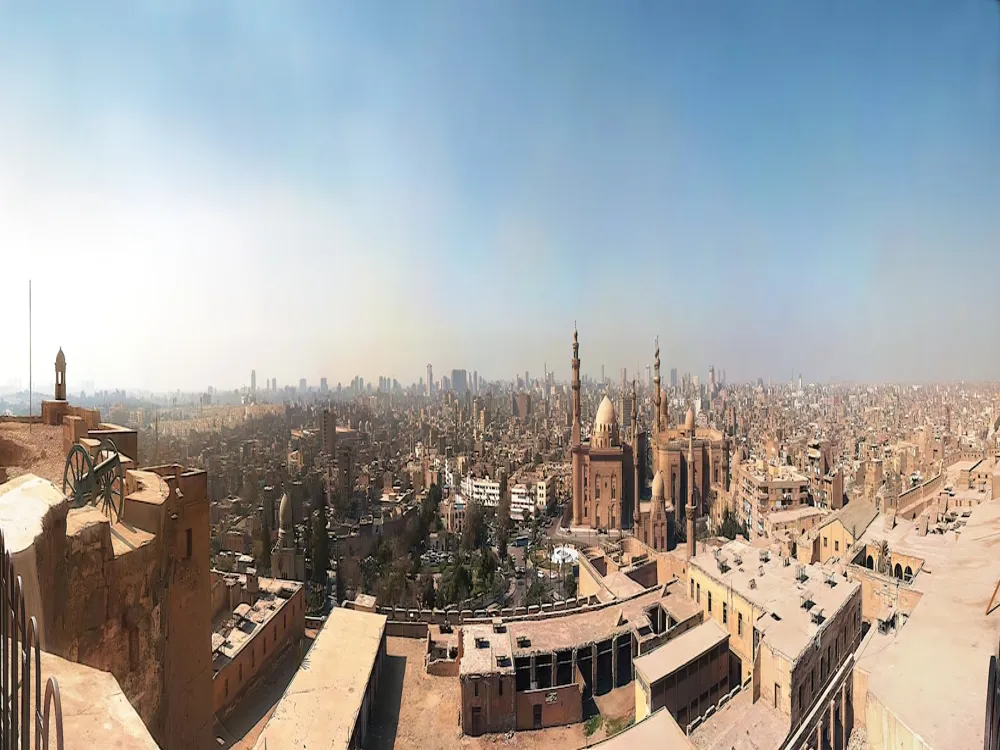
Sultan Hassan Mosque is an excellent example of brilliant Egyptian architecture. Completed in 1363, this ancient yet interesting monument never fails to intrigue its visitors. With interesting intricacies in the features, this massive mosque was built for Sultan Hassan el-Nasir in the Mamluk era.
Sultan Hassan Mosque portrays the true vision of Arabic creative artistry. The entrance is exemplary stonework reminiscent of an old Egyptian temple. There is a gigantic gate at the North, which is also the tallest in the capital.
Read More
Tentmakers Market

Situated along a 300-meter-long stretch of road across the Bab Zuwalya, the Tent Makers Market of Cairo is a must-visit place if you are fond of handwoven textile designs and embroidery techniques. Beautiful blankets, embroidered pillowcases, and blankets can be found in this ancient market.
The Tent Makers Market of Cairo is not only the hotspot of tent making and textile art in Egypt, but it also houses a majority of members of the Tent Makers community of this beautiful city. While strolling through the market, you can discover the awe-inspiring legacy Egypt’s textile industry followed to date. Such a level of art and textiles work is difficult to find in the age of machines and industries. In addition to the beauty of the Tent Makers market, the covered roof along the stretch of the market helps keep you charged for sightseeing the entire place and avoid the scorching Sahara’s Sun. Although sunlight do peeps in from cavities made at intervals in the ceiling, that will definitely not heat you up during the trip to this wonderful place.
The Architecture of the Market
With its foundations laid in the 17th Century, the Tent Makers market is one of the few places in Egypt which dates back to the medieval period. Deriving its name from some of the masterpieces produced by Egypt, the Tent Makers market is the one and only place to visit in Cairo if you are willing to buy any textile material.Upon entering the market, you can observe a common pattern in the architecture of the place. The building built on either side of the street comprises of two storey buildings. The lower floor is used by the tent makers as their shop, while the upper floor serves as their respective residences.Among these shops, you can find shops related to tents and appliqué works decorating the interiors of the shops. As you move further, you can find shops related to other textile products such as coloured fabrics, cushions, pillow covers, wall hangings, Egyptian cotton made bed covers and many more. The tents made in this market are used for a variety of events such as weddings, funerals, public gatherings, inauguration events etc.The Tent Makers market suffered damages on a large scale after the severe earthquake of 1992, which shook the land of Pharaohs to its foundations. Till the present day, there are some structures which are undergoing restoration. Looking at them gives a feeling of the intense magnitude and impact of the earthquake of 1992. But ignoring such things is the best you can do if you wish to fill your scrapbooks with memories and only memories.
History of Tent Makers Market
Sharia Khayamiya, one of the remaining fully covered markets of Cairo, originally forms part of the Muiz El Din Street, glorifying the stretch of road between Bab El Fotouh and Bab Zuwalya. Even though the shops in this market are somewhere close to over 150 years old, the craftsmanship related to tents and other textile products has been practices since 2500 BC.These shops suffered severe damages from the earthquakes of 1992, as a result of which almost all of them have undergone renovation since then. All in all, it is the stories of survival of this market which is one of the most fascinating things to know about.
Nearby Eating Spots
One of the best advantages of the location of this place is that you can stroll across the market while satisfying your appetite in the subsequence. Either you are a street food lover or restaurant goer, Tent Makers market in Cairo has everything covered.You can find a lot of local vendors preparing and selling Kushari on the streets, giving you a taste of what blend of Egyptian pasta, lentils, chickpeas, fried onions feels like. The flavour of this dish is further amplified when you add the spicy tomato sauce atop all these ingredients.If you are a restaurant goer, the Zizo, located just opposite to Bab El Fotouh, is the place for you. You can move on to Alfi Bey Restaurant situated at 3 Shar’a el Alifi after feeding on the Alexandrian style spicy tomato sausage sandwiches served at Zizo.
Timings
Monday to Saturday: 9:00 AM to 6:00 PM
How to Reach
CarIf you happen to be a local resident of Cairo, then it is confirmed that you don’t need any directions to reach the Tent Makers market. You can definitely drive to the marketplace. Even if you are a tourist, you can rent a taxi and hop off at the market location easily.SubwayTo reach the Tent Makers market by a different and relatively simple route, you can board the subway from any part of Cairo, and deboard at Bab El Shaaria metro station. From there, all you need to do is rent a taxi to reach the market, since the market lies approximately 1.9 Km. South of the metro station. Going by Subway can save your energy for the fun-filled day ahead.Choosing either of the modes for transportation will get you to the Tent Makers market, but it is recommended to reach the market via Subway to avoid the buzzing and honking traffic of Cairo.
Best Time to Visit
Considering the popularity of this place, the best time to visit the Tent Makers market is during the holy festival of Ramadan. The marketplace undergoes a stunning makeover during this period, and the charm of this place speaks for itself in attracting people from all over the world.While some people are busy buying yellow, blue or red coloured Egyptian fabrics to decorate their homes and shops, you can also buy here to your heart’s content.In addition to this, there is a great probability that you may spot one of the masterpieces hanging in any of the Café you visit across Cairo, tracing back to the Tent Makers market. Whatever be the reason, one cannot deny from the fact that Tent Makers market delves into the colours of this holy festival with the city. This makes the festival of Ramadan the best time to give this place a visit in order to experience the true colours of this place.
Tips
As the market is closed on Sundays, plan your trip to the Tent Makers market accordingly.
Interesting Fact
The Kiswah (Cloth that covers the Kaaba in Mecca) has been produced in the Tent Makers Market of Cairo.
Read More
The Citadel
Right on the foothills of the enormous Mokattam, the fortress of the Saladin Citadel was established in the year 1176. It is one of the most remarkable creations of military infrastructure, attracting many tourists every year. Wander about the surroundings and witness one of the most fantastic views in the city.
Nicknamed the 'Alabaster Mosque, the most famous church in Egypt is well known for the remarkable white stone with which the entire monument is built. Walk in the northeast direction and you will come across the magnificent El-Nasir mosque , which is essentially a complex of many small museums standing together.
Read More
Ramses Wissa Wassef Art Centre

Founded in the year 1951 AD by Ramses Wissa Wassef, the Wissa Wassef Art Centre is known for its Art Museum and Tapestry Works. Situated in the Harrania district in the Greater Cairo region, this art centre has been a hotspot of art and architecture for a long time. Established with a vision to teach Egyptian children arts and tapestries, it has today become an iconic place where every artist desires to exhibit their works.
Conferred with the Aga Khan Award for Architecture in 1983, the Wissa Wassef Art Centre has revived its belief over the years that art is intrinsic in nature, and is something which does not need to be taught. There is even a Museum shop selling tapestry works developed by the Centre’s artists. So if you are an art lover, the Art Centre is the right place for you to airdrop during your visit to Cairo.
Read More
Zamalek

Best known for its extravagance, Zamalek district is well located in the heart of Gezira alongside the gleaming Nile. The entire territory gives you a posh European feel with English-style decorated boutiques and restaurants.
Popular for its exotic restaurants, bars and hotels, Zamalek is equally well known for the amazing exhibitions. The district is a home to the Palace of Arts, which regularly organises rotating exhibits of some of the finest pieces of ancient artworks of Egyptian artists. Observe the stunning Nile and appreciate the true beauty of the district.
Read More
Al-Hakim Mosque
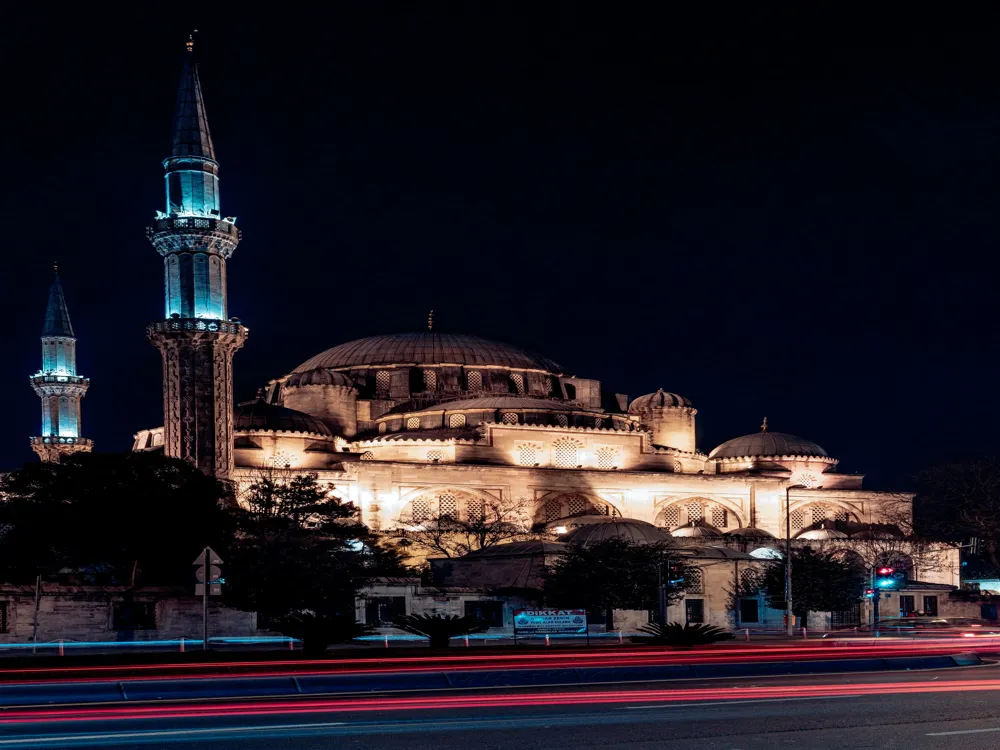
Located on the east side Al- Muizz Street in Islamic Cairo, Al-Hakim Mosque was restored in 1980 and reopened for worship. The mosque is popular for its restored or replaced Quranic inscriptions done in Kufic script. The mosque has a vast open courtyard with beautiful interiors and exteriors.
Cairo Travel Packages
View All Travel Packages Cairo
Nearby Places Cairo
Browse Package Collections
Browse Hotel Collections










